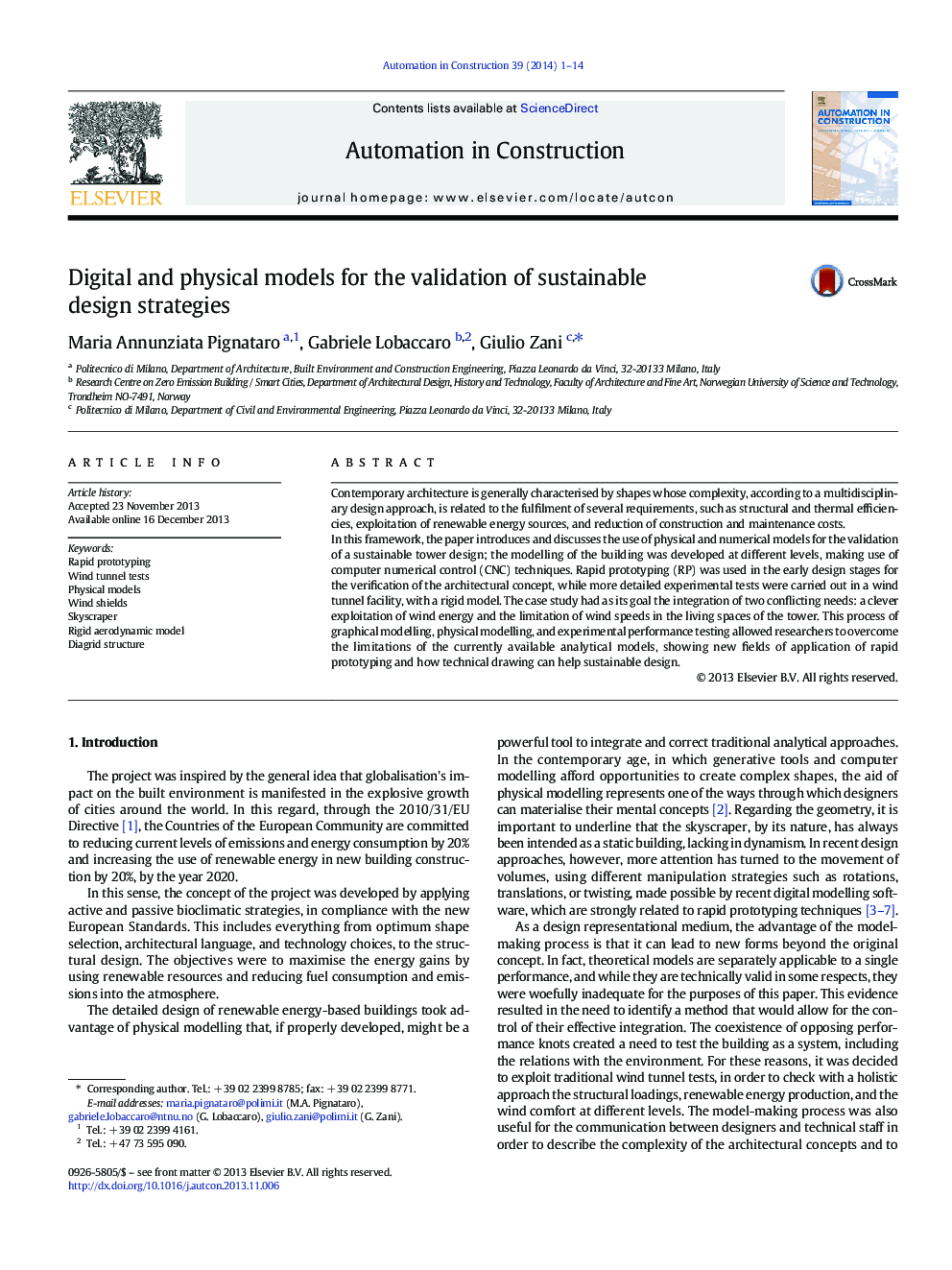| Article ID | Journal | Published Year | Pages | File Type |
|---|---|---|---|---|
| 246549 | Automation in Construction | 2014 | 14 Pages |
•Sustainable architectures can be validated by means of physical modelling.•Complex shapes can be tested making use of rapid prototyping techniques.•Physical modelling allows to overcome the limitations of analytical methods.•Small scale models represent an affordable way to predict engineering quantities.
Contemporary architecture is generally characterised by shapes whose complexity, according to a multidisciplinary design approach, is related to the fulfilment of several requirements, such as structural and thermal efficiencies, exploitation of renewable energy sources, and reduction of construction and maintenance costs.In this framework, the paper introduces and discusses the use of physical and numerical models for the validation of a sustainable tower design; the modelling of the building was developed at different levels, making use of computer numerical control (CNC) techniques. Rapid prototyping (RP) was used in the early design stages for the verification of the architectural concept, while more detailed experimental tests were carried out in a wind tunnel facility, with a rigid model. The case study had as its goal the integration of two conflicting needs: a clever exploitation of wind energy and the limitation of wind speeds in the living spaces of the tower. This process of graphical modelling, physical modelling, and experimental performance testing allowed researchers to overcome the limitations of the currently available analytical models, showing new fields of application of rapid prototyping and how technical drawing can help sustainable design.
